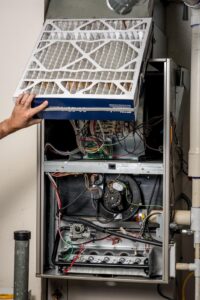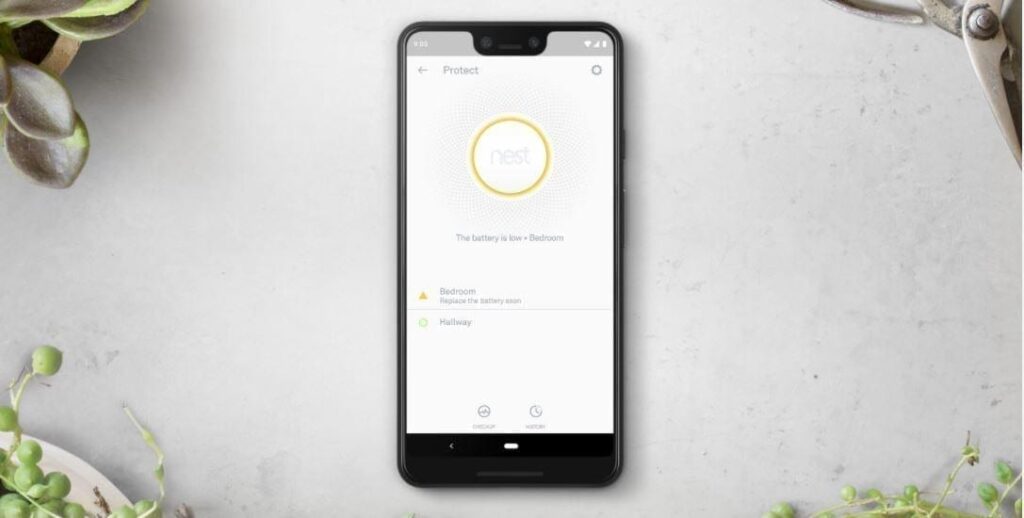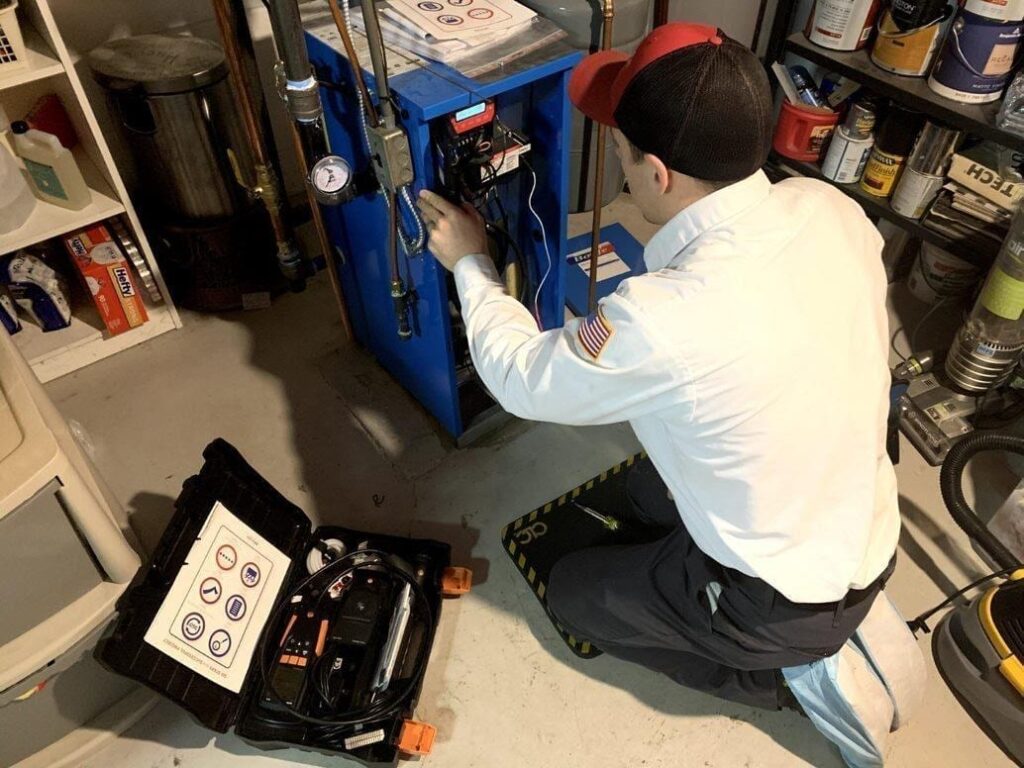Winter is coming… is your home’s heating system ready?
Welcome to Residential Heating Systems 101. We’ve kept things super simple and we bet you’ll pass with flying colors.
Lesson 1: How often should I change my furnace filter?
The single most important (and easiest) thing to help keep your forced air heating system running longer and more efficiently is to make sure your furnace filter is changed frequently. A dirty filter causes reduced air flow through the system and also creates dust and grime build up on the internal components. Both these issues can cause reduced efficiency and premature system failure. If you can’t remember the last time you changed your air filter, it has probably been too long. In most single-family homes, it’s a good idea to change a standard 1-inch media filter roughly every 1-3 months; a 4-inch filter every 3-6 months. You should at least check the filter every 30 days. Several factors could mean changing your air filter more or less often, including:
- Size of your home (larger homes mean changing more often)
- Whether or not you have pets (pets mean changing more often)
- Flooring (dust and debris tends to get caught in carpets but blow around wood/tile floors more frequently)
- Whether or not you have people with sensitivities in your home (you’ll want to change the filter more often if you live with young children, elderly people or someone with medical conditions).

Lesson 2: How does carbon monoxide (CO) get into a home?
Carbon monoxide (CO) is produced when something burns. When heat and combustion gases are produced as a fuel burns, the resulting toxic exhaust is supposed to be ventilated to outside your home. The negative effects of carbon monoxide exposure start at very low levels. Symptoms may include headache, nausea, fatigue, and are likely to be particularly severe for anyone with respiratory or cardiovascular problems. Symptoms become more noticeable around 70 parts per million (ppm), and sustained levels at or above 150 ppm can lead to death*.
Any appliance that burns fuel can produce carbon monoxide. Common sources of CO inside a home are a gas oven or stove burner, gas dryers, gas water heaters, gas furnaces and boilers, and even traditional wood-burning fireplaces. If anything is wrong with the venting or exhaust in these systems, or the appliance itself, toxic CO could build up inside your home.
It’s essential to have a working carbon monoxide detection system in your home. Check monthly to ensure your carbon monoxide detectors (and smoke detectors!) are working. Most CO and smoke detectors have a life span of 10 years; replace them after 8 or 9 years just to be safe. In addition, it’s important to ensure that all gas-burning appliances are professionally installed – and professionally maintained and serviced.
PRO NOTE: Bonfe offers carbon monoxide detectors that can be linked to your phone. You can receive notifications in real time, know where in your home an alert is occurring, and when the detector batteries need replacing.

Lesson 3: How do I make my furnace more efficient?
We’ve already talked about replacing your furnace filters, which is the easiest way to make your furnace/forced air system more efficient. Dirty filters can cause the blower fan to work harder to push the air through the filter.
The blower wheel on the furnace is another area to check if your furnace isn’t working as efficiently as it could. Just 1/20th of an inch of residue on a blower wheel can lower a furnace’s efficiency by a whopping 21%**. Blower wheels typically need to be cleaned once a year. A good time to have this done is during a system safety inspection and tune-up.
(It’s best to leave this to the HVAC professionals at Bonfe).
One more furnace component worth keeping an eye on: the ignitor. Ignitors wear out over time. The most obvious way to tell that an ignitor has gone bad is that it stops working and your furnace stops running. But wear and tear can be seen in visible damage to the ignitor itself. Ignitor checks are included in professional system tune-ups from Bonfe.
Lesson 4: What if my home heating system is a boiler?
While most residential heating systems in the Twin Cities are forced air furnaces, many older homes in the area have boilers and radiator systems for heating.
For maximum efficiency and life span, boilers and radiator systems need regular safety and maintenance checks just like forced air furnaces do.
When the boiler is turned on each fall, it is important to bleed air from every radiator in the house. Removing air from the radiators helps make sure the hot water that circulates throughout the system is getting to the radiators and heating the rooms.
A heating professional can clean the burners that are part of the boiler system and can also add water conditioner to help prevent corrosion of the boiler and pipes. If you have a high efficiency boiler, you’ll need to have the heat exchanger and drain system professionally cleaned every few years to make sure the flue passageway is clear and the heat exchanger can properly heat up the water that goes to the radiators.
Steps you can take as a homeowner to help ensure your radiators provide maximum heat:
- Don’t put furniture directly in front of a radiator.
- Regularly vacuum around the radiators and between the radiator pipes to remove dust and grime that can build up.

Whether you have a forced air furnace or a hot water boiler, safety and maintenance tune-ups of your heating system should be done twice a year. A bit of maintenance and prevention can go a long way toward extending the life of your equipment. Not only will you stay ahead of costly (and chilly) unexpected breakdowns, you may also prevent a life-threatening problem.
Pro tip: You don’t have to wait until fall to schedule a heating tune-up. It can actually be done any time of year! The most important thing is to have it done regularly. Choose a time that’s most convenient for you. (You’ll have more appointments available in the off-season, too!). And of course, if you suspect a problem with your heating or cooling equipment any time, give us a call. Better safe than sorry!
Extra Credit:
NEVER store flammables near gas-burning equipment. Paint, stain, thinner, varnish, and cleaning products are all highly flammable and need to be kept far away from your furnace, boiler, water heater, and other gas-burning equipment.
* U.S. Consumer Product Safety Commission
**Environmental Protection Agency on Indoor Air Quality

